On Thursday morning, Wang and Rachel once again picked me up and drove me two and a half hours southeast to a rural village about 50 kilometers from the Laotian border. The highway was jammed; the National Day vacation really lasts all week. After about an hour and a half we exited the superslab for a secondary paved road which took us through several medium-sized towns and a national preserve. The preserve is marked by high cliffs, dense rainforest vegetation, and caves that were used by the People’s Liberation Army during the war with Japan.

Then we turned up a dirt road and got out at Meng Xing village #9, part of the town of Mengla, where the relatives of one of Rachel’s cousins live. Other relatives arrived around the same time. We were less than 50 kilometers from the Laotian border and about 150 kilometers from Dien Bien Phu, Vietnam, where the French got their asses handed to them in 1954 by the Viet Minh. I was here:
View Larger Map
Li Jian Wei and his family live in what I can best describe as a rural row house, a long rectangular structure built of rough grey brick that is divided into housing for about a dozen families. I believe it dates to the early days of the People’s Republic. Jo En Lai took a special interest in Xishuangbanna and did much to develop its economy. He saw the Mengla area as a good source of rubber, and so collective farms were established. There weren’t enough local people there at the time to work the land, so the government “encouraged” (in Rachel’s words, the accuracy of which I cannot assess) people from other Chinese provinces to move there. Rachel’s relatives were one such family. More recently, the government has allowed individual farmers to run their own businesses and control their own houses and farms.
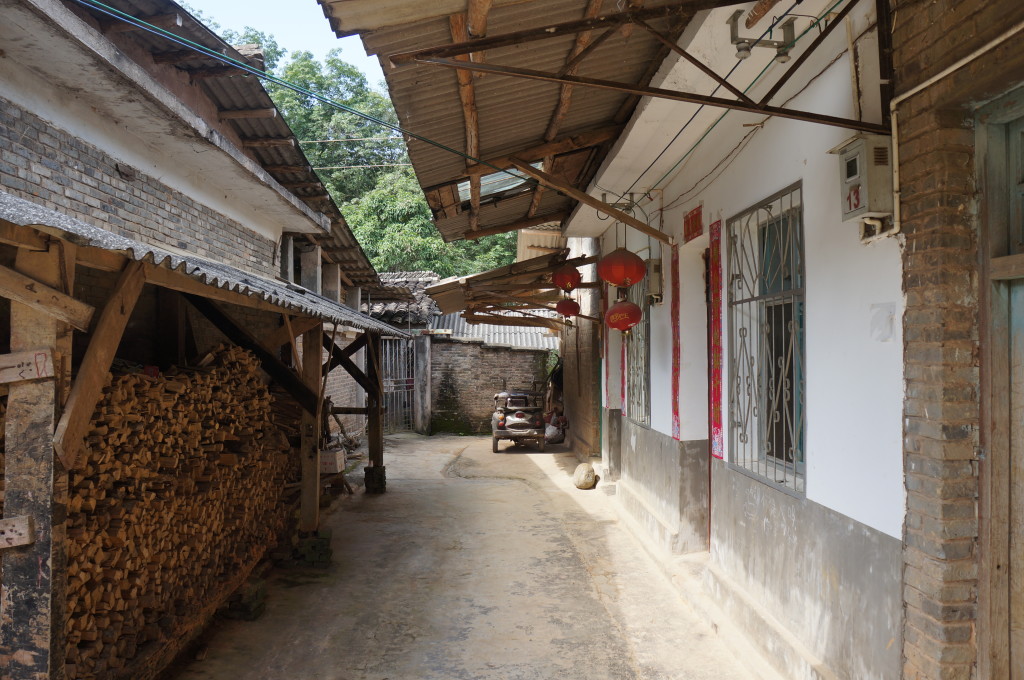
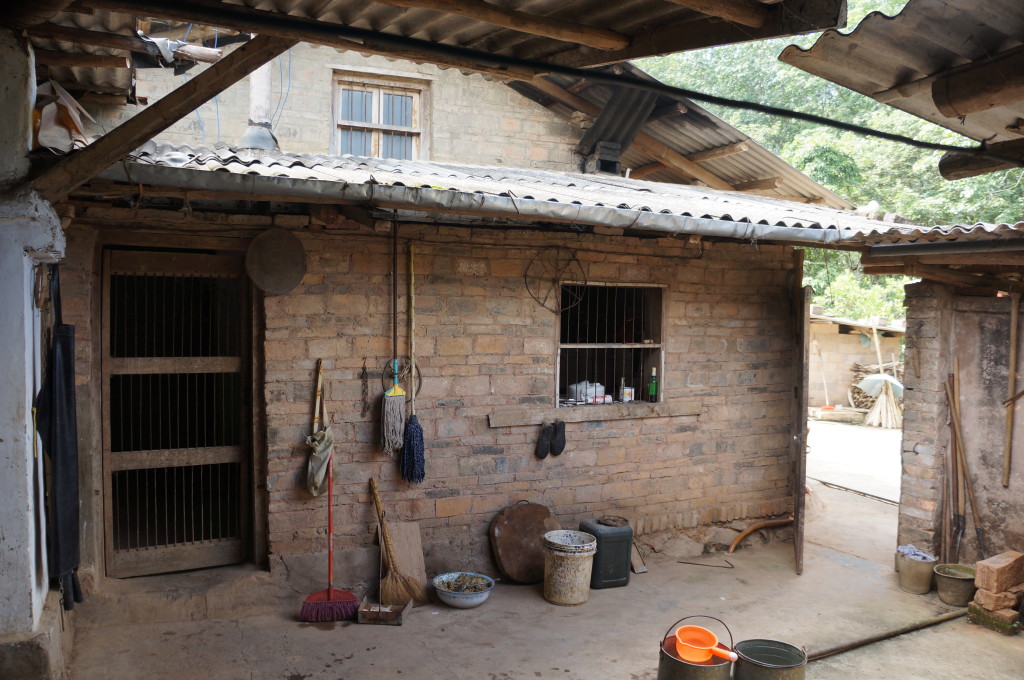
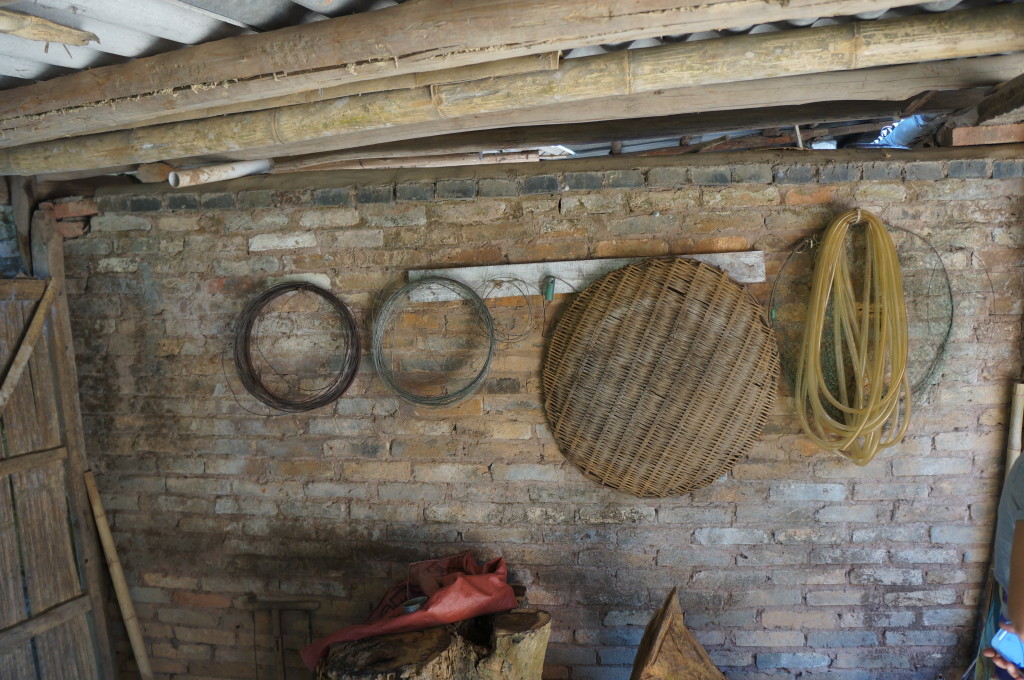
Li Jian Wei’s house is pretty basic in its construction and amenities: conrete floors, corrugated metal roof/ceilings. There are three medium sized rooms, two of which are open partially to the sky, and a couple of small bedrooms. The kitchen sink is a pipe mounted low to the ground on a sloping concrete slab that drains into a trough.
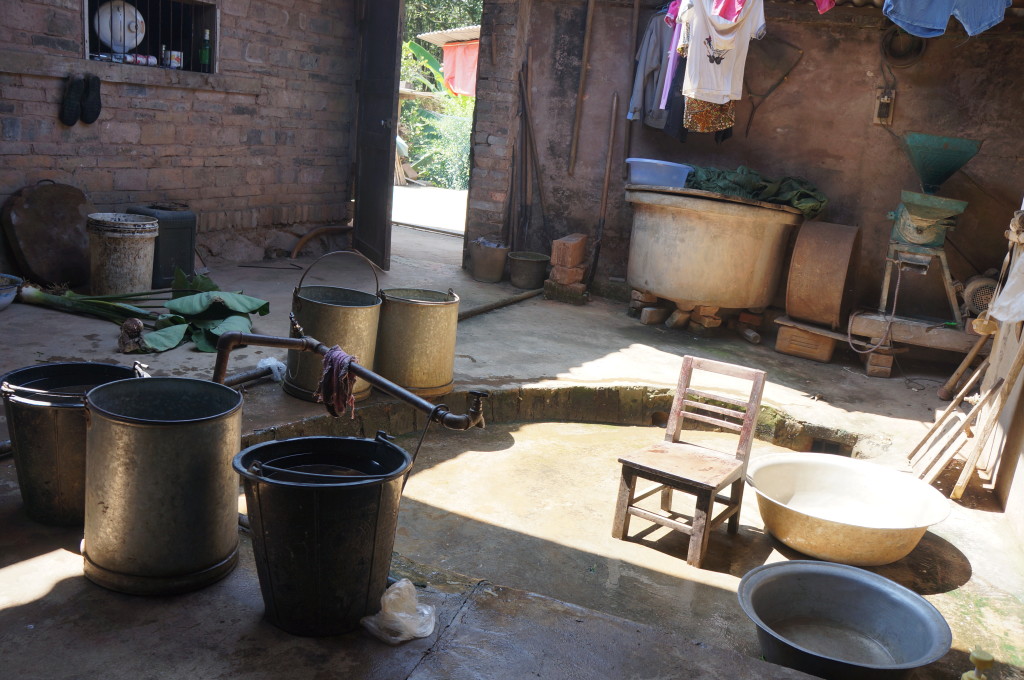
The stove is a wood-fired box with two enormous built-in woks.
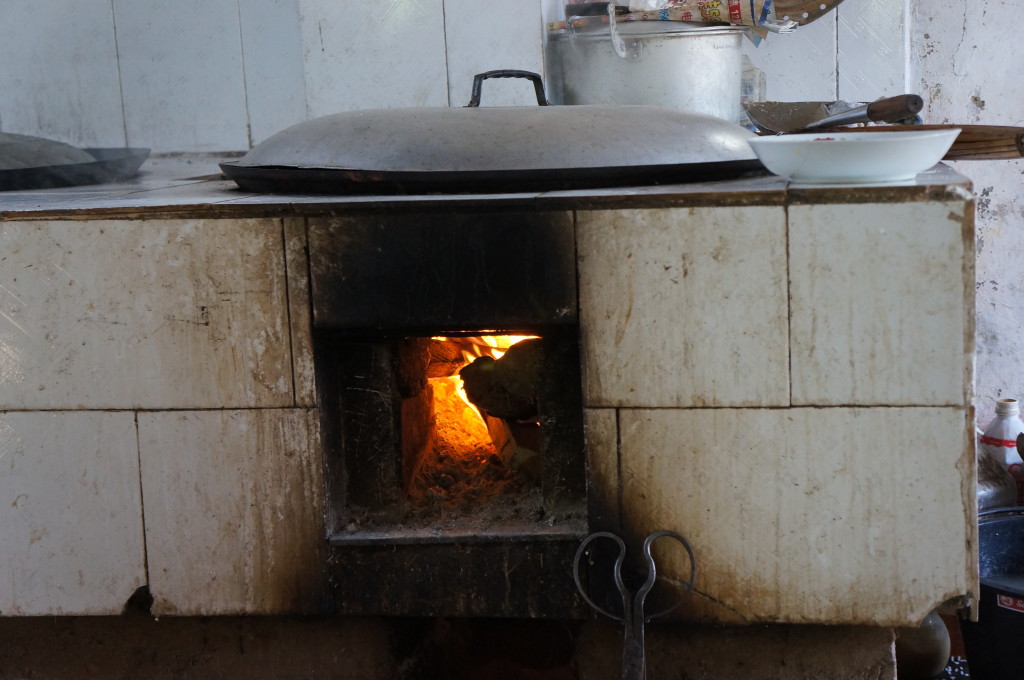
There are no kitchen counters or cabinets or closets.
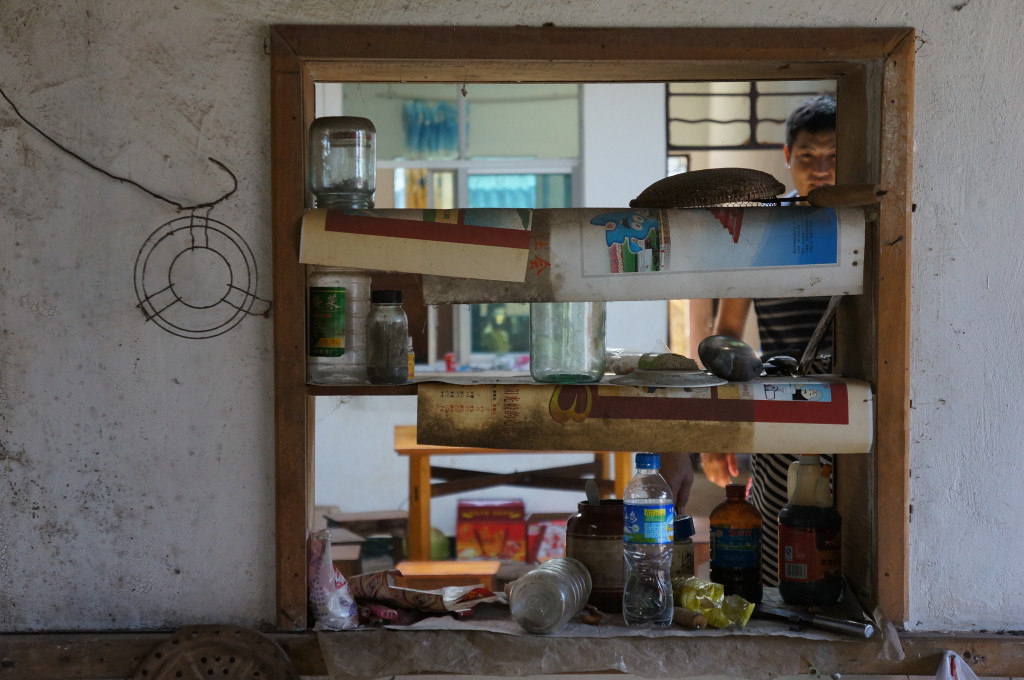
The toilet is a shed out back with a hole in the floor.
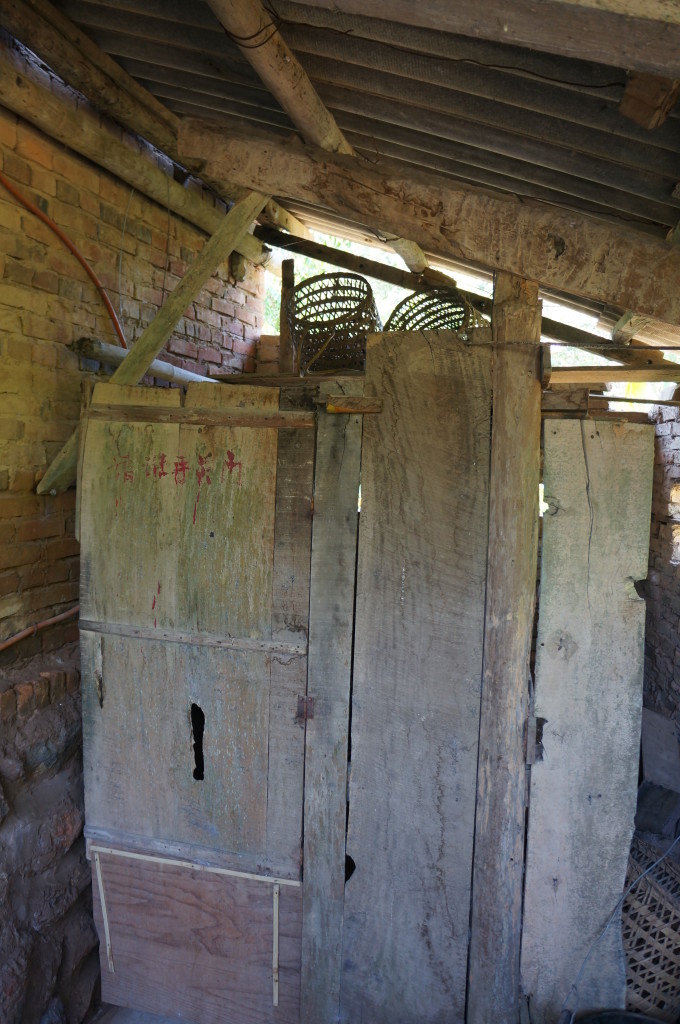
Beds are blankets spread out on the concrete. There is trash and junk strewn about, some of which is occasionally taken out to a dumpsite and burned.
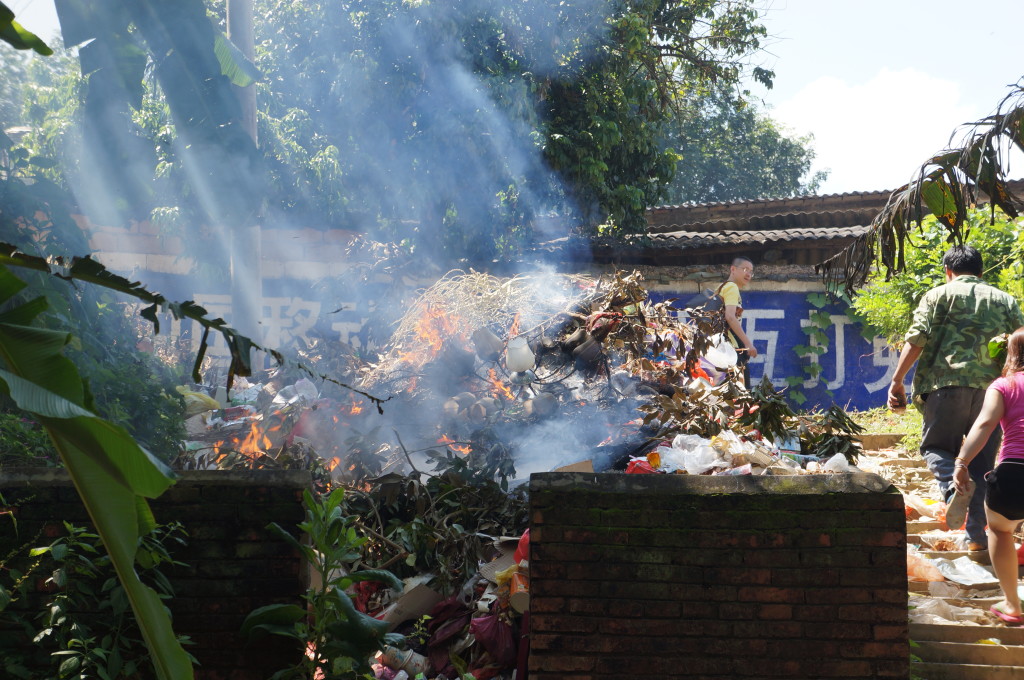
Though his house is a very modest affair, Li Jian Wei’s farm is a source of obvious pride and delight to him. Shortly after we arrived, he took us out to see his rubber trees.
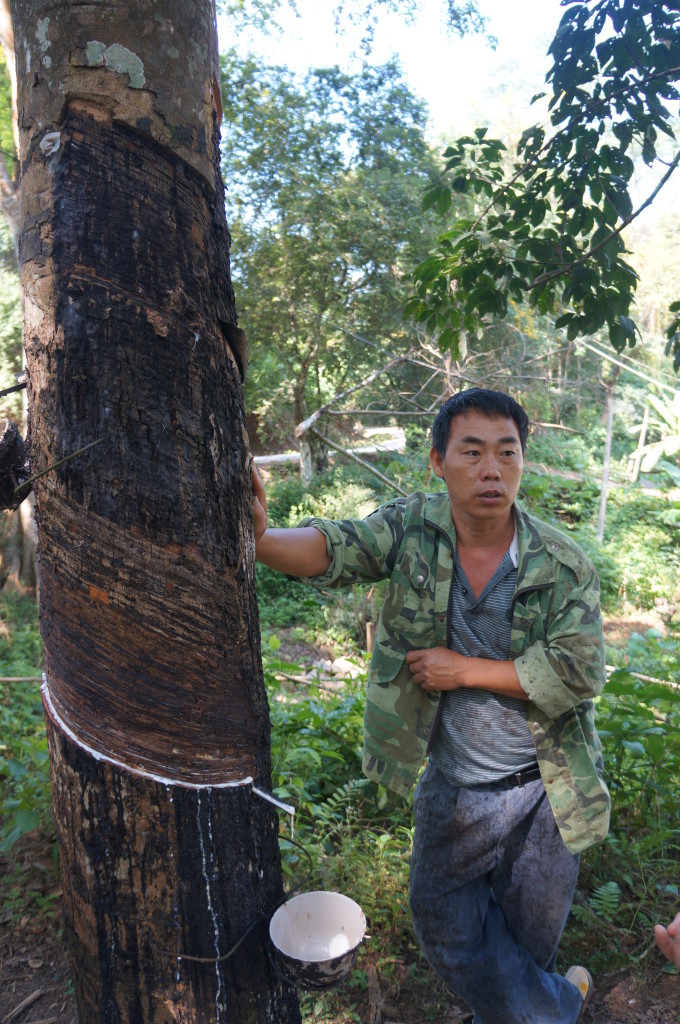
He explained how he makes spiral cuts into their bark and peels it away. Then he drives a small metal trough into the tree at the lowest point of the spiral and hangs a cup below it. The rubber sap oozes out of the tree where the bark has been removed and spirals down the cut, goes into the trough and then into the bowl. It takes about six hours for the bowl to fill. A tree managed in this way will produce rubber for a good 35 years.
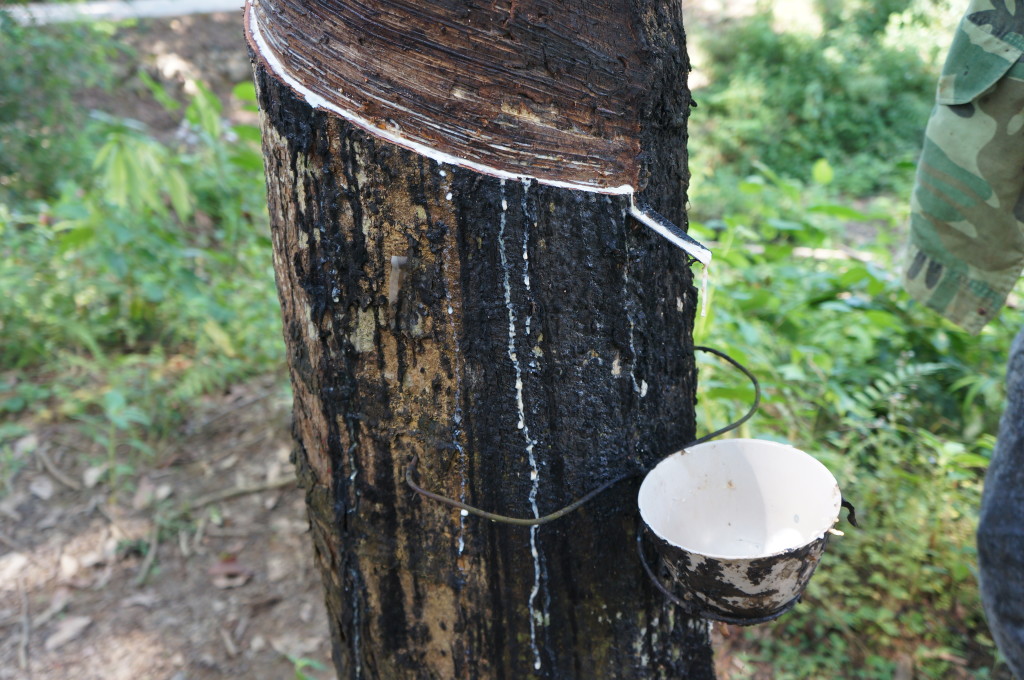
The rubber sap is then poured into a large round bowl. Acid is added to get it to firm up a little. Then the resulting wheel of rubber (which looks and feels for all the world like a cheese wheel) is removed from the bowl, driven to a factory in town, and sold for ¥80 (about $12.90). Here is one of Li Jian Wei’s neighbors with his trike truck loaded up with rubber and ready to head for the factory.
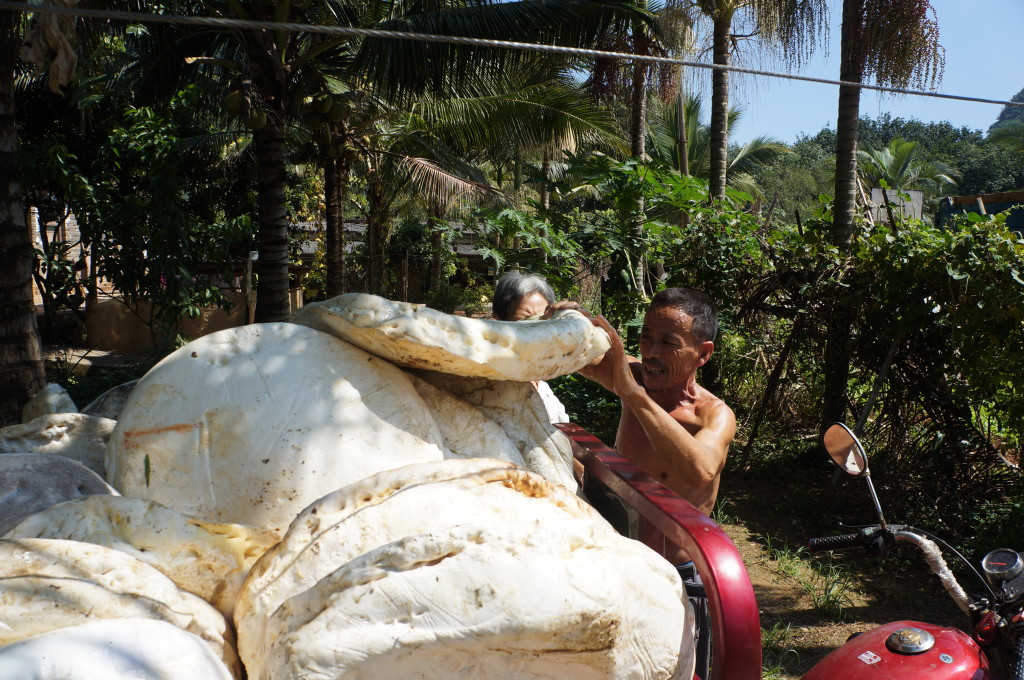
Beyond the forested area where the rubber trees grow is more of Li Jian Wei’s farm. Though the tropical soil is very fertile, the land is so hilly and steep that all his crops are jammed together. What to my suburban eyes at first seemed like nothing more than a riot of undifferentiated weeds was actually a very productive garden. Almost everything growing there is edible: peppers, melons, bananas, plantains, chives, ginger, bamboo, coconuts, and a number of fruits and vegetables I couldn’t begin to identify.
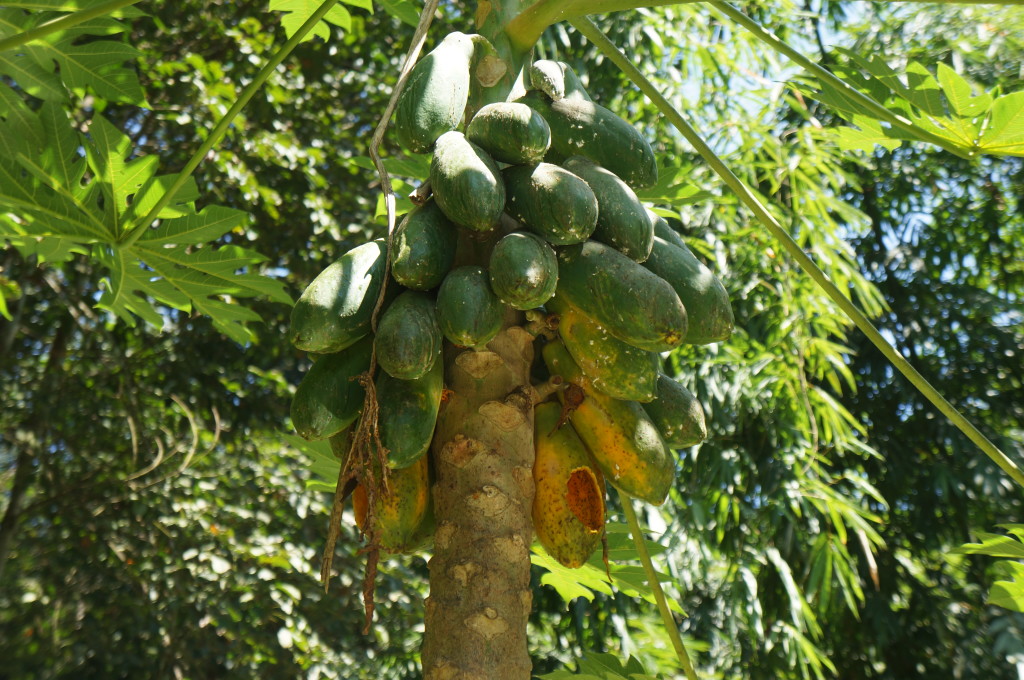
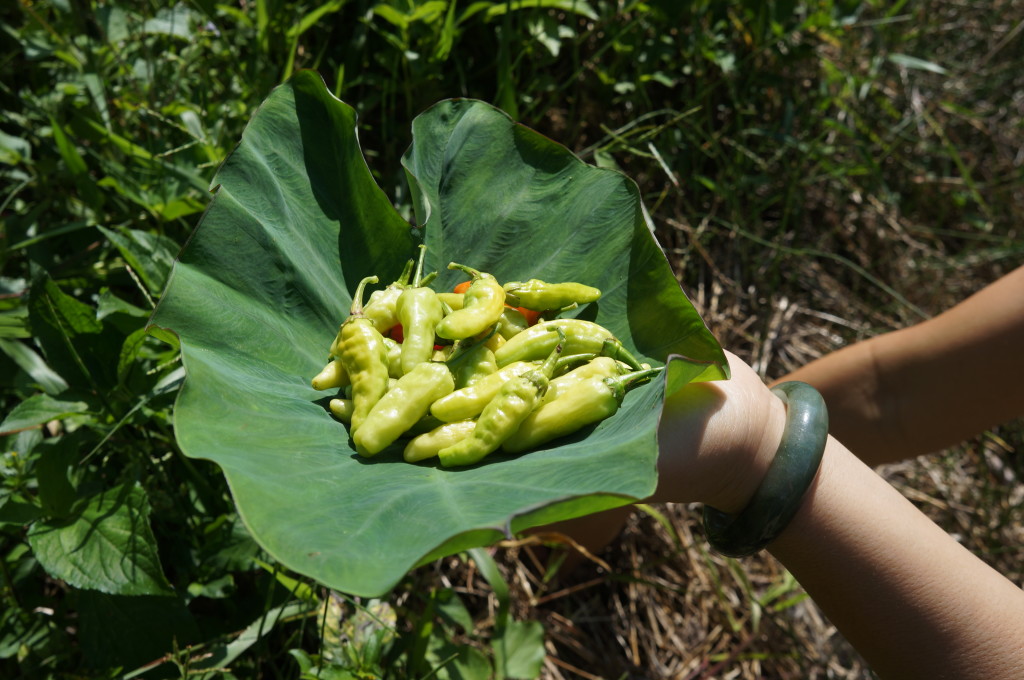
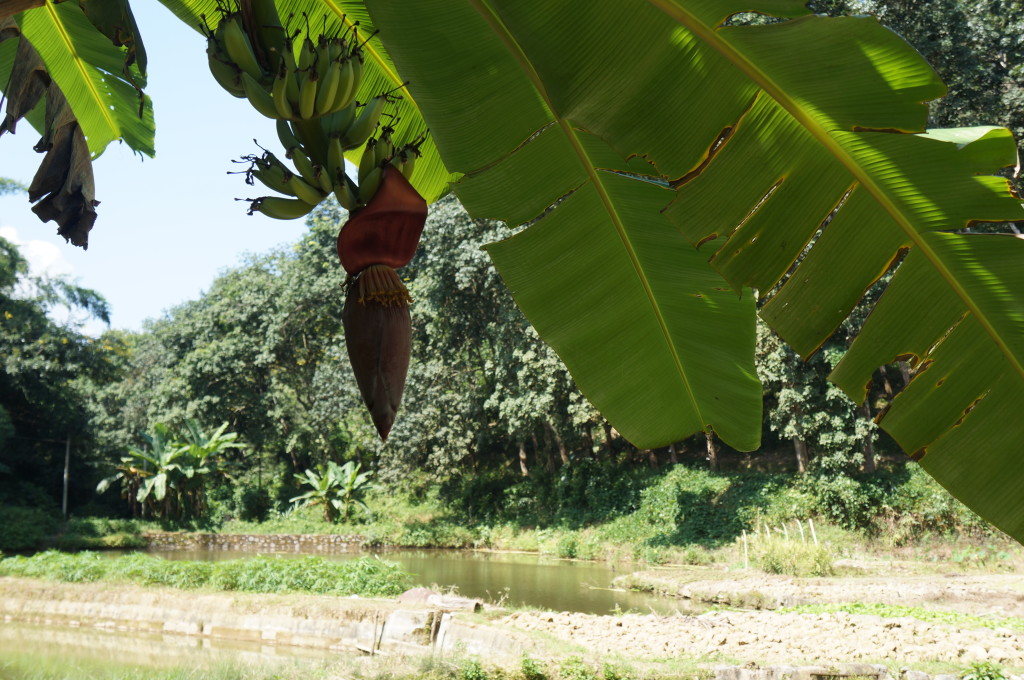

He also has a pond stocked and teeming with small fish.
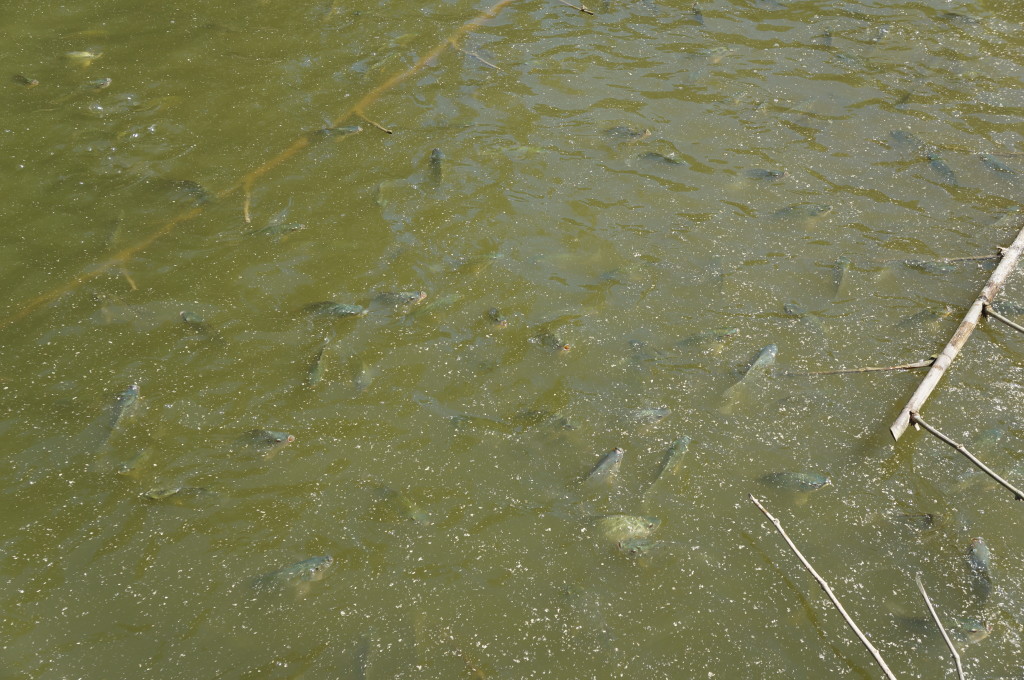
He has chickens. He and his family subsist pretty comfortably on the food he grows.
Back at his farmhouse, some of the other relatives were cooking us a sumptuous lunch.
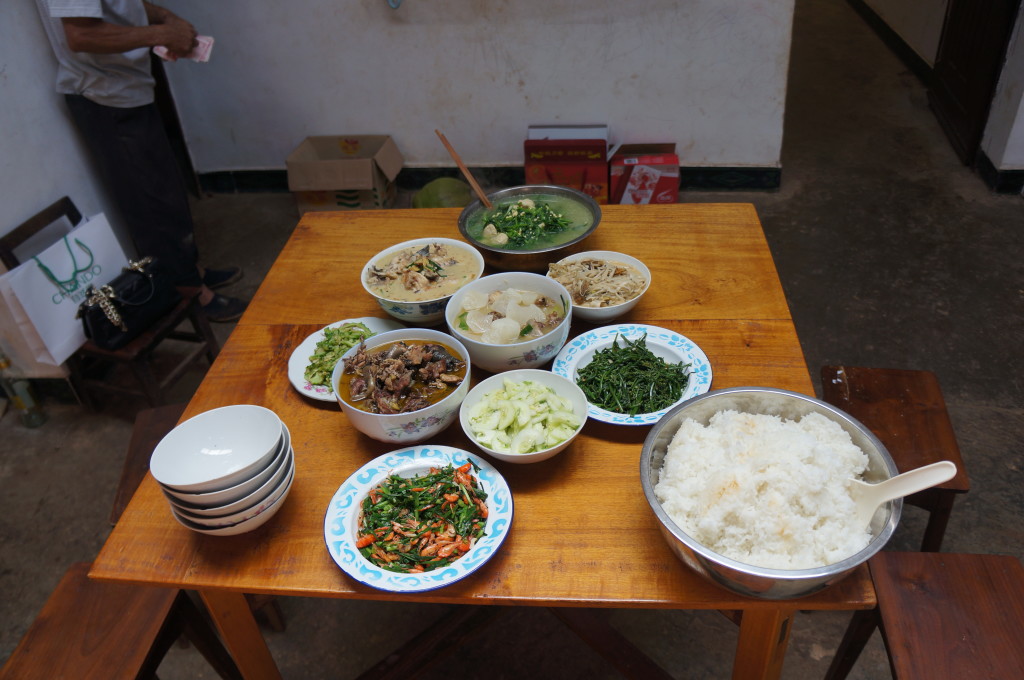

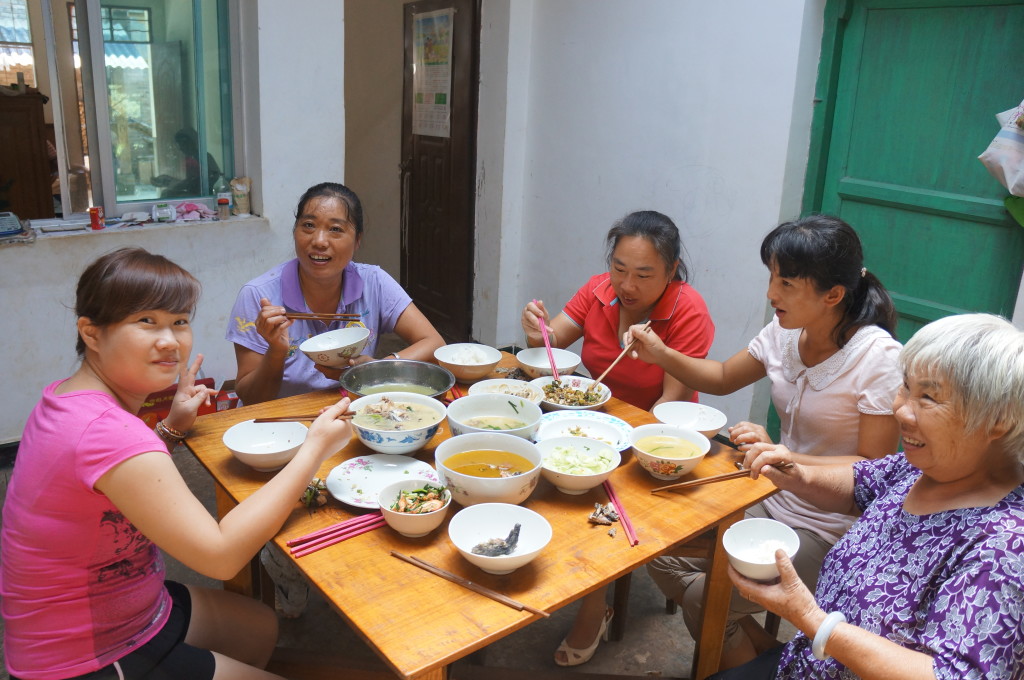
All of this food is home grown. That Li Jian Wei’s wife and relatives could cook so many different and delicious dishes in such rustic conditions seemed almost magic. And it was delicious, especially the dumplings (made from fresh eggs and fresh ground chicken), the fish stew, the spiced bamboo, and a green leafy vegetable resembling spinach but sweeter. At lunch, Li Jian Wei’s wife brought out some hooch to toast my arrival. She makes it by fermenting and distilling rice mash, adding honey, putting it in a large glass jar and burying it for over ten years. The result was something smooth, sweet and potent that tasted very much like Southern Comfort.
After lunch, Li Jian Wei cut down a large bunch of bananas to give to the relatives who had come to visit. We packed them into the cars and after warm goodbyes were back on the road to Jinghong.
Read Xishuangbana Redux–Part I.


































Speak Your Mind